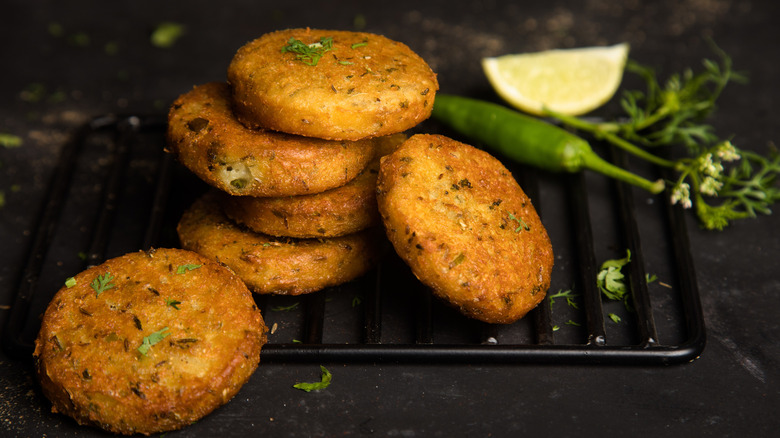What Makes Indian Kebabs Unique
Call it souvlaki in Greece, yakitori in Japan, or shish kebab in Turkey — roasting skewered meats over an open fire is a worldwide endeavor. Although the word kebab is originally Arabic, the cooking method's exact emergence is unclear. Archeological remains in Santorini have found stone supports for skewers dating back to the 17th century B.C.E., per Babbel.
As the etymology demonstrates, there is a link between kebabs and Islamic culture. For example, in the Balkans, a minced meat variation called ćevapi is typically prepared by Muslims. Meanwhile, Indonesian satay was introduced by Islamic traders from South Asia, says The Oxford Companion to Food.
In India, kebabs are sometimes mistakenly attributed exclusively to Persian and Mughal Islamic origins; however, the dish's development in the South Asian nation is far more complex. According to Slurrp, famed Moroccan traveler Ibn Batuta noted kebabs served at feasts in the 12th century, 200 years before the Mughal rule. Such a storied consumption evinces Indian variations arose from a large variety of influences — not just by way of Muslim impact. Such a range of renditions creates delicious kebabs uniquely Indian.
Indian kebabs use unique spices and preparation methods
The most immediately vibrant characteristic of Indian kebabs is the spices. Even for varieties similar to the Middle Eastern counterpart — cooked horizontally over charcoal, the flavorings are distinct to the subcontinent. The marinade is typically yogurt-based and contains a range of spices, like cardamom, turmeric, red pepper, and others. Tenderizers like mashed papaya and lime also frequently appear, notes Food & Wine.
Indian kebabs aren't limited to preparation over an open fire but also to tawas — large frying pans similar to a wok, via The Spruce Eats. Famed in Lucknow, minced meat is combined with aromatics and shallow fried in ghee. India Times describes the result as a tender, flavourful patty unique to the region.
Yet, the most famed Indian kebab style only arose in the 20th century. Cooked in a tandoor, an oven traditionally used for bread, Punjabi Indians popularized the tikka and tandoori style, now recognizable in restaurants worldwide. According to Hindustan Times, tandoori cooking is a Hindu technique — an Indian method detached from their Middle Eastern associations. So, when preparing succulent tandoori in the oven, know you're biting into a uniquely Indian creation.

